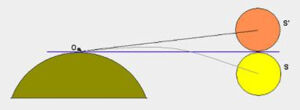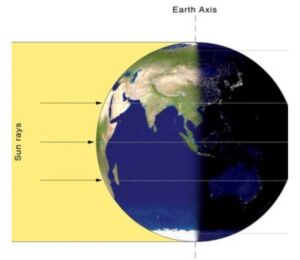
The March equinox – also called the vernal equinox in the Northern Hemisphere – marks the beginning of the spring season in the Northern Hemisphere, and the autumn season in the Southern Hemisphere.
What is it? The March equinox marks the sun’s crossing above the Earth’s equator, moving from south to north.
When is it? The March 2023 equinox will arrive on March 20 at 21:24 UTC. That is 4:24 p.m. Central Daylight Time.
Note: No matter where you are on Earth, the equinox brings us a number of seasonal effects, noticeable to nature lovers around the globe.
Equal day and night on the equinox?
At the equinox, the Earth’s two hemispheres are receiving the sun’s rays equally. Night and day are often said to be equal in length. In fact, the word equinox comes from the Latin aequus (equal) and nox (night). For our ancestors, whose timekeeping was less precise than ours, day and night likely did seem equal. But today we know it’s not exactly so ……precisely speaking, there is more daylight than nighttime on the day of the equinox, – an additional eight or so minutes of daylight at mid-temperate latitudes. There are two reasons why we have more than 12 hours of daylight on this day of supposedly equal day and night. They are:
1. The sun is a disk, not a point. Watch any sunset, and you know the sun appears in Earth’s sky as a disk.
It’s not pointlike, as stars are, and yet – by definition – most almanacs regard sunrise as when the leading edge of the sun first touches the eastern horizon. They define sunset as when the sun’s trailing edge finally touches the western horizon.
This in itself provides an extra 2 1/2 to 3 minutes of daylight at mid-temperate latitudes.

2. Atmospheric refraction. The Earth’s atmosphere acts like a lens or prism, uplifting the sun about 0.5 degrees from its true geometrical position whenever the sun nears the horizon. Coincidentally, the sun’s angular diameter spans about 0.5 degrees, as well.
In other words, when you see the sun on the horizon, it’s actually just below the horizon geometrically.
What does atmospheric refraction mean for the length of daylight? It advances the sunrise and delays the sunset, adding nearly another six minutes of daylight at mid-temperate latitudes. Hence, more daylight than night at the equinox.





Very interesting – you learn something new every day!